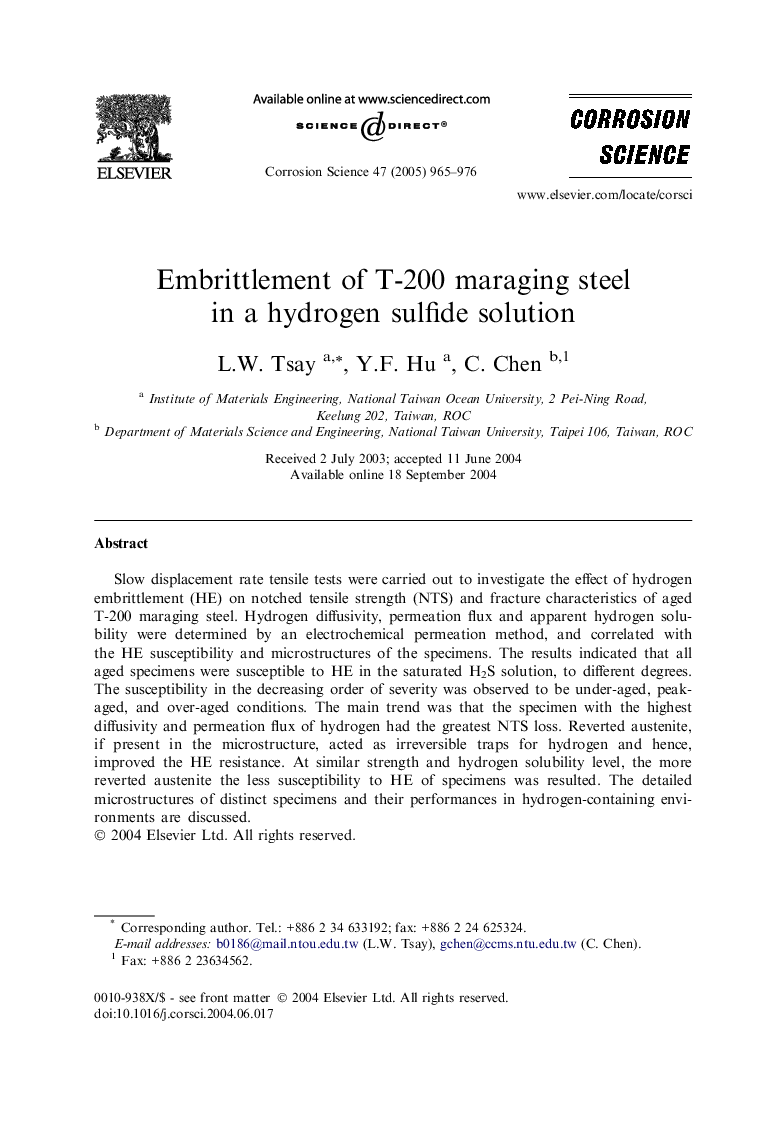| Article ID | Journal | Published Year | Pages | File Type |
|---|---|---|---|---|
| 10628516 | Corrosion Science | 2005 | 12 Pages |
Abstract
Slow displacement rate tensile tests were carried out to investigate the effect of hydrogen embrittlement (HE) on notched tensile strength (NTS) and fracture characteristics of aged T-200 maraging steel. Hydrogen diffusivity, permeation flux and apparent hydrogen solubility were determined by an electrochemical permeation method, and correlated with the HE susceptibility and microstructures of the specimens. The results indicated that all aged specimens were susceptible to HE in the saturated H2S solution, to different degrees. The susceptibility in the decreasing order of severity was observed to be under-aged, peak-aged, and over-aged conditions. The main trend was that the specimen with the highest diffusivity and permeation flux of hydrogen had the greatest NTS loss. Reverted austenite, if present in the microstructure, acted as irreversible traps for hydrogen and hence, improved the HE resistance. At similar strength and hydrogen solubility level, the more reverted austenite the less susceptibility to HE of specimens was resulted. The detailed microstructures of distinct specimens and their performances in hydrogen-containing environments are discussed.
Related Topics
Physical Sciences and Engineering
Materials Science
Ceramics and Composites
Authors
L.W. Tsay, Y.F. Hu, C. Chen,
